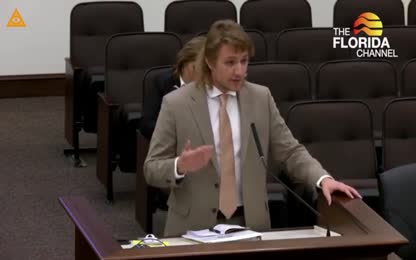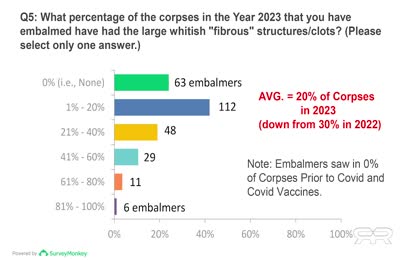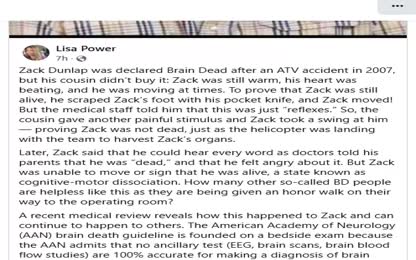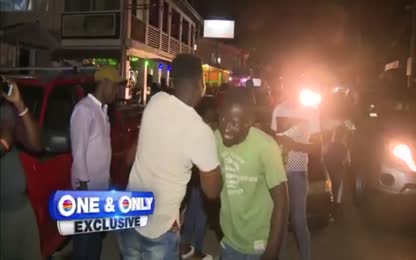Advertisement
The Death of JonBenét Ramsey - By Peter Hyatt
"If they pile garbage upon the heap, the truth is hidden underneath."
Peter Hyatt: The use of passivity seeks to avoid taking responsibility and/or conceal identity. A subtle blaming of the victim is consistent with both guilt and the use of passivity.
Peter Hyatt analyzes the case of JonBenét Ramsey.
This video lesson focuses upon the topic of sexual abuse and linguistic evidence of guilt.
The Death of Jonbenet Ramsey: https://www.youtube.com/watch?v=vbdAlaardBQ
Peter Hyatt - www.statement-analysis.blogspot.com has many articles regarding this case. For training in Statement Analysis for your department, company or your home, visit www.hyattanalysis.com
-------------
Wikipedia: Death of JonBenét Ramsey
JonBenét Patricia Ramsey (August 6, 1990 – December 25, 1996) was an American child beauty queen who was killed at the age of six in her family’s home in Boulder, Colorado. A lengthy handwritten ransom note was found in the home. Her father, John, found the girl’s body in the basement of their house about seven hours after she had been reported missing. She had sustained a broken skull from a blow to the head and had been strangled; a garrote was found tied around her neck. The autopsy report stated that JonBenét’s official cause of death was "asphyxia by strangulation associated with craniocerebral trauma".[2][3] Her death was ruled a homicide.[4] The case generated nationwide public and media interest, in part because her mother Patsy Ramsey (herself a former beauty queen) had entered JonBenét into a series of child beauty pageants. The crime is still unsolved and remains an open investigation with the Boulder Police Department.
The Boulder police initially suspected that the ransom note had been written by Patsy, and that the note and appearance of JonBenét’s body had been staged by her parents in order to cover up the murder. In 1998, the police and the district attorney (DA) both said that JonBenét’s brother Burke, who was nine years old at the time of her death, was not a suspect.[5][6] JonBenét’s parents gave several televised interviews but resisted police questioning except on their own terms. In October 2013, unsealed court documents revealed that a 1999 grand jury had recommended filing charges against the Ramseys for permitting the child to be in a threatening situation. John and Patsy were also accused of hindering the prosecution of an unidentified person who had "committed ... the crime of murder in the first degree and child abuse resulting in death".[7] However, the DA determined that there was insufficient evidence to pursue a successful indictment.[7]
In 2002, the DA’s successor took over investigation of the case from the police and primarily pursued the theory that an intruder had committed the killing. In 2003, trace DNA that was taken from the victim’s clothes was found to belong to an unknown male; each of the family’s DNA had been excluded from this match. The DA sent the Ramseys a letter of apology in 2008, declaring the family "completely cleared" by the DNA results.[8] Others, including former Boulder police chief Mark Beckner, disagreed with exonerating the Ramseys, characterizing the DNA as a small piece of evidence that was not proven to have any connection to the crime.[9]:11 In February 2009, the Boulder police took the case back from the DA and reopened the investigation.[10]
National and international media coverage of the case focused on JonBenét’s brief beauty pageant career, as well as her parents’ wealth and the unusual evidence found in the case. Media reports questioned how the police handled the investigation. Ramsey family members and their friends have filed defamation suits against several media organizations.
- Category: Analysis,Murder/UnsolvedDeath/Suicided?,Research /Investigation/Report
- Duration: 18:06
- Date: 2021-02-18 21:38:50
- Tags: no-tag
8 Comments
Video Transcript:
This short video is about the death of John Vene Ranzi. We're coming up upon the anniversary time of her death, which is almost two decades ago. And much of the analysis has already been posted on the statement analysis blog. What I'd like to do is talk about something particular here that I believe will be of use to those of you who wish to know more about truth, more about statement analysis, and perhaps regarding training. The context goes back to a December night when I was watching the news. See it next to my five-year-old daughter when a rather alarming photo came across the screen. The photo was of a little girl who was dressed like a Las Vegas showgirl. This is not something of alarming because we have seen this photo over and over again. But back then it was indeed without the tolerance of build-up, a sexualized picture. She was dancing and posing in a way that would mimic a Las Vegas showgirl who was concerning. Regardless, the first element which I could deal with was when the 911 call was revealed. The 911 call to go right to the point of the issue showed that Pansy Bramsey was deceptive in that call. She showed guilty knowledge of a need to deceive police from the very beginning. We also have analysis of the ransom note, which shows Pansy as the primary author of a phony ransom note. Behavioral analysis would suggest the resistance on part of the parents, regardless of how it was spun by the attorneys, show that they had something to hide indeed. And the Boulder Police Department did a very good job investigating. Now I recognize the initial error of not securing the crime scene. This was overplayed by Alex Hunter, the district attorney at the time. He was in over his head with private attorneys that he did not want to face. Steve Thomas later wrote a book about the investigation. Steve Thomas ended up resigning from the Boulder Police Department. I had to read the investigation. I don't know him personally, I've not communicated with him, but I do know him from his words. And what his book revealed about himself was that his DNA was a cop, that's who he was. He was unable to bear the injustice of what he was seen, as the district attorney's office worked to fork and sabotage the police investigation. So the fact that they didn't secure a crime scene immediately, as they believed the parents were waiting for a ransom call, wasn't error indeed, but it wasn't something that derailed the investigation. The investigation was derailed by Alex Hunter. What I'd like to talk about is very specific here. What I'd like to talk about is one of the statements that was made by John Ramsay, which has been highlighted within analysis and is instructed for us. The parents made several interviews eventually, and as they stole them all, the police eventually sat down with the police, but the delay was a successful delay. Later, it went to the grand jury, and they were indicted in child abuse and the death of their daughter. Alex Hunter refused to sign the indictment, literally overruling the people. He was not going to face all of the private attorneys. There was no chance of that happening. And so Justice has been perverted in this case. And as Steve in his book showed, he was incapable of bearing up under the injustice. In fact, it was interesting to me that he went on from there, his immediate work, from police work, was a type of carpentry, where 90-degree angles and things that make sense were the easiest for him to embrace. Again, I don't know him personally, but from what I read, the psycho-linguistic profile of him, showed someone that probably was a good cop, and probably would have been a good cop, for the last two decades, had it not been for a politically-minded attorney. One of the statements made by John Ramsay as shocked people over the years in terms of the analysis, he was asked about finding her. And this was the expectation. You would say something like this, I found her in the basement closet, or I found her in a closet. And as a biological father, the progenye is very much expected. This means a psychological presence immediately in this statement. He's right there with it. It's his daughter. It wouldn't be normally considered a shocking find. It's not what he said. And the expected here would be I found her in the basement closet, I found her in the closet, I found her in the downstairs closet, I found John Bane there, however he wanted to word it. I expected to hear it from a biological parent, but progenye on I, beginning that sentence, and a direct connection to her, I found her, because that's his claim. It's not what he said. He said, I opened the door, turned on the light, and there she was. And these words here are very important. It is said repeatedly that the statement analysis we do not interpret, we listen. So what follows here is not an interpretation, but a careful listening and a question of why the words were chosen. The first thing you'll notice about this is the delay of time of getting to his daughter. I found her is a psychological immediacy. I and she are almost as far apart as they can be in the sentence. So that's something that people intuitively recognize, but they don't know why that bothers them. Here's why it bothers them. There she was. This is called passivity or a passive voice. A passive voice will alleviate responsibility and ownership. So if someone shot their wife, they said the gun went off. Guns don't have a mind of their own. They don't simply go off. That person is concealing the identity and responsibility of who pulled the trigger. The gun went off. But there's more there. We'll note things where passivity has a need to conceal responsibility, identity. Sometimes it's appropriate. Sometimes it's not. If you were in Paris recently, you've seen that Paris is under riots and the headlines say Paris is burning. Bottles were thrown. If I did not know who threw the bottles, that would be an appropriate use of the passivity. Bottles were thrown. Rocks were thrown. With the passivity here, we have a psychological distancing between I, which starts strong, and I'll tell you why that's strong in a moment, and the location. We often find when someone uses passivity to conceal identity and or responsibility, it's because they place the item, and in this case, his daughter, where she was found. The marijuana was seeded on the table. Now I've given human attribute, seeding, or seeded to an inanimate object. It's a strong indication that I either put it there, or I know who did. The drugs were lying on the floor. Drugs don't lie down like humans. So it's an indication that this person may have knowledge of what happened. The passive voice is a psychological term. It's not a term of grammar. It's a psychological term, which allows the person to begin to distance themselves from what they're saying. They will begin to distance themselves from what they're saying, and here's how we did it. Notice the timing of the sentence versus the timing here. I found her, and then the location is next. The most important thing is I found her. It's his own daughter, as remains. So I found her is unexpected. No matter what other wording else is here. In the closet is secondary or tertiary. In the basement closet, a not necessarily description. But I found her. The kid never put her in the closet. That would assign responsibility. He does none of this in the passive voice. What did he do before he found her? What did he do? He opened the door. I opened the door, and I found her. No. I opened the door, and then turned on the light. And then I found her. No. This slows down the pace dramatically to getting to hear the passivity. Before he finds her, in fact he doesn't find her, he opened the door. He turned on the light, and then as if no one is responsible for this, there she was. And this is our indication that must be understood and studied, and why I'm going to focus on it now. This statement is something I believe. I believe he's 100% truthful in this statement. I believe he opened the door. I believe he turned on the light, and I believe there she was. And the facts are not in dispute as far as I know from the investigators. What we do is we don't interpret his words. We ask why the choice of words. Why the use of passivity? Why these words and why now? And those of you familiar with statement analysis will recognize two of the elements here. One is an opening of a door, and the other is the inclusion of lights. Both of these, as you can tell, both of these elements are unnecessary to simply say, I found her in the basement. I found her in a closet. Or even if the detail is important enough to say, I found her in the basement closet. The key is, I found her. That's the most important part. What we know, and this is through many years of asking questions, is when something is unnecessary, it's very important. In the brain processing, the brain pauses to add extra words in. I've described this process as being a millisecond less than a microsecond. I don't have a measurement for that, and no one does at this point. It's by the way you may have been told. The reason is, is because when someone goes into the brain, to choose which words to use, including which words to use, which information to give, which information not to give, what verb tenses, what pronouns, where to place each word next to another. And all this takes place in less than a millisecond of time. What I can't measure, and what science is yet to measure, is all the attendant memories, some strong, some weak, some very thin, that are surrounding those words. The associations, there's so much more to it. Why would someone need to tell us they opened the door? He wasn't asked, did you open the door in the closet? This was offered. It's unnecessary information. Therefore, something took place linguistically within the brain's transmission of words to the tongue, that caused him to slow down. We wouldn't have cared whether he turned the light on either. But he did. Here's what we find. We find that doors entering people's statements, unnecessarily, will cause us to pause, and consider if they were victims of childhood abuse. Childhood abuse. And you can imagine why something like a door would be in someone's memory 30, 40, 50, 60 years later. Consider the trauma of an in-home sexual abuse, for example, where a child hears a door opening, the hormonal consequence of such, which we still can't measure properly, can leave an imprint upon the brain, where they have an association with doors, which they don't even realize. There are other indicators in John's language that he indeed was a victim of abuse himself, as was Patty. Patsy, excuse me, in childhood. I'm not reinterpreting the door. I believe he opened it. I am openly wondering why he felt the need not only to slow down the pace, but to tell us something that's not necessary. That is associated with childhood abuse, particularly childhood sexual abuse. It's traumatic. The brain remembers what it remembers. The next is turned on the light. He wasn't asked, was it dark? But he needed to pause before he got here. And then here he didn't get it all. But this is not expected to say that not only did he open the door, but he turned on the light. This is closely associated with sexual activity. I went to bed, turned off the light, went to sleep, is lights going off and off in a negative experience. Light, having to do with energy and sexual activity, is frequently found in the language of sexual activity. Now the sexual activity is not with judgment, meaning it could be, listen or illicit, appropriate or inappropriate, and it could be child abuse. We do find it quite a bit within child abuse statements. So I am not reinterpreting. I turned on the light. I believe it turned on the light. But it's an indication that it's consistent with the rest of the analysis. Number one, that John himself was a victim of early childhood sexual abuse, which there are other indicators in his language and other statements, that John very likely was sexually abusing the daughter that had been dolled up to look like a lost nigger showgirl sexualized. And there she was, is to remove all responsibility of who placed her there. If you believe a kidnapped had broken in, that responsibility would write with that bastard, that evil monster that did this, that killer, the anger and rage with burns starting here, right to it. Instead, he went very soft into a passive voice. This is a very strong signal that he was concealing who placed her there. Personal abuse, sexual abuse, concealment of responsibility all in one sentence. It is consistent with the 911 call. It is consistent with the interviews. It's consistent with the behavioral analysis. It's consistent with the investigators from older PD. And it is consistent with the decision that was turned down by the grand jury. Turned down by Alex Hunter. If you wish to learn more about a training and statement analysis, you can visit the blog. Also visit our website at www.highadanalysis.com.










 Donate
Donate







